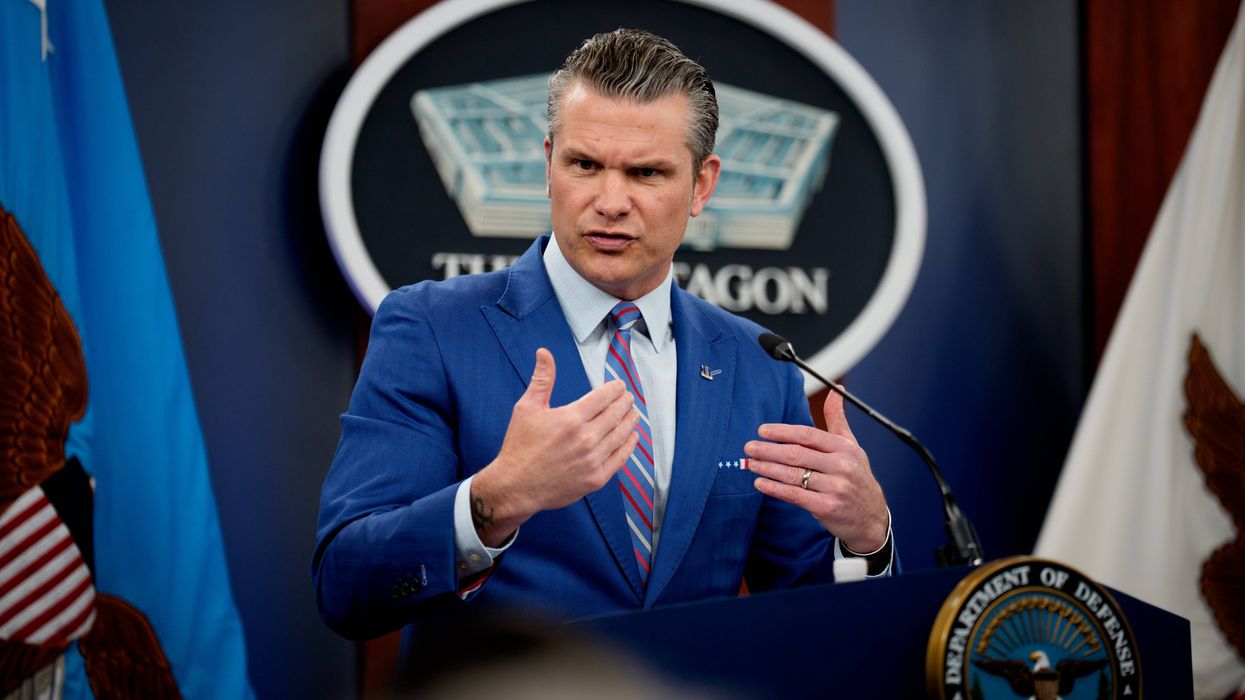May, 18 2021, 12:00am EDT

IEA's First 1.5degC-Aligned Scenario Bolsters Call for No New Fossil Fuel Extraction
IEA must now make it central to its flagship WEO and fix remaining model flaws.
WASHINGTON
Today, the International Energy Agency (IEA) released a special report, "Net Zero in 2050: A roadmap for the global energy system," that represents the agency's first ever effort to model a comprehensive energy pathway towards limiting global warming to 1.5 degrees Celsius (degC). While concerns remain over some of the IEA's modelling choices, campaigners are welcoming the report as a milestone towards IEA reform.
Through the #FixTheWEO campaign, climate advocates, investors, businesses, and diplomats have been urging the IEA for years to align its influential annual World Energy Outlook (WEO) with the full ambition of the Paris Agreement goals. In a key win, IEA director Dr. Fatih Birol committed for the first time last week that the new 1.5degC-aligned scenario will be "integral" to WEO 2021 and made a permanent fixture of future WEOs.
Critically, the 1.5degC-aligned scenario finds "no need for investment in new fossil fuel supply." This represents a break from past IEA reports that boosted new oil and gas development by focusing on scenarios that steered the world towards catastrophic levels of warming.
As next steps towards reform, energy analysts are calling on the IEA to transform the WEO to focus on 1.5degC-aligned policies and investments and fix persistent modelling flaws. The new scenario continues to underestimate wind and solar while overselling riskier, more polluting alternatives.
In response to today's special report, Oil Change International experts released the following statements:
Kelly Trout, Interim Energy Transitions and Futures Program Director, said:
"It's huge to have the world's most influential energy modellers bolstering the global call to stop licensing and financing new fossil fuel extraction. Governments, banks, and Big Oil and Gas companies can no longer use the IEA as a shield to claim that their support for fossil fuel expansion is consistent with the Paris Agreement. The IEA's own modelling now shows new oil and gas fields are not compatible with limiting warming to 1.5 degrees.
"However, the IEA still has a ways to go to cast off its fossil fuel roots and prove itself a credible global advisor on climate. If the IEA is serious about steering the world towards a 1.5@C-aligned future, it must put 1.5@C at the heart of all its analysis and communications moving forward.
"Today's report should herald the end of any excuses for continued fossil fuel expansion. We should never see another IEA report that claims investment in new oil and gas supply is 'needed.'"
David Tong, Senior Campaigner, said:
"Today's report is a tremendous win for climate advocates who have been demanding that the IEA align its analysis and communications with the critical 1.5@C limit. While we applaud the IEA for taking this step, they can rest assured that advocates will continue pushing for the institution to complete the job.
"The IEA needs to fix the flaws in this report by prioritising truly clean technologies, and thrust that fixed scenario into the center of the 2021 World Energy Outlook. By continuing to underestimate wind and solar potential, the IEA is still encouraging dangerous levels of reliance on carbon capture and storage, fossil gas, and bioenergy, technologies favored by polluting industries but harmful for people.
"Gambling the climate on a 4,000 percent increase in carbon capture and storage by 2030 is extraordinarily risky and, the IEA's own analysis shows, not necessary. Instead of banking on a consistently underperforming and still polluting technology, the IEA should be accelerating the phase-out of fossil gas and coal by relying on proven wind and solar solutions.
"We need the IEA to be a beacon pointing the way to a truly clean, Paris-aligned future. With today's report, that light is starting to appear, but it is not yet shining as bright as it must."
Oil Change International is a research, communications, and advocacy organization focused on exposing the true costs of fossil fuels and facilitating the ongoing transition to clean energy.
(202) 518-9029LATEST NEWS
DOJ Disclaimer Raises Eyebrows as Latest Epstein Files Contain Scandalous Mentions of Trump
"The US Department of Justice shouldn’t be acting like the White House’s personal law firm," said Democratic Rep. Nellie Pou.
Dec 23, 2025
The US Department of Justice on Tuesday released a new batch of documents related to the criminal investigation of convicted sex offender Jeffrey Epstein—along with a disclaimer aimed at exonerating President Donald Trump, who is mentioned numerous times in the latest disclosures.
In a message posted on X, the DOJ asserted that some of the latest documents "contain untrue and sensationalist claims made against President Trump that were submitted to the FBI right before the 2020 election."
The DOJ insisted that "the claims are unfounded and false, and if they had a shred of credibility, they certainly would have been weaponized against President Trump already."
Among the latest batch of documents released by the DOJ was a letter purportedly written by Epstein in prison to fellow convicted sex offender Larry Nassar in which he claimed that Trump "shares our love of young, nubile girls."
The existence of this letter was reported by the Associated Press in 2023, although its contents were not known at the time. According to MeidasTouch, investigators who found the letter submitted it for handwriting analysis to verify its authenticity, but it is not definitively known at this time if it was written by Epstein.
An internal DOJ email from 2020, meanwhile, states that Trump flew with Epstein on his private plane at least eight times between 1993 and 1996, which was more than had been previously known.
On two occasions, Trump and Epstein shared flights with two people whom the DOJ described as "possible witnesses" in a criminal case against Ghislaine Maxwell, a longtime Epstein accomplice who is serving a prison sentence for conspiring to help him sexually abuse minors.
The DOJ's post defending Trump from allegations made in the documents it had just released drew scrutiny from Politico senior legal affairs reporter Kyle Cheney, who pointed out some basic logical inconsistencies with the department's claims.
"Bizarre defensive post from DOJ saying if allegations of Trump had any credibility they would’ve been 'weaponized' against him," he wrote in response. "But... if they had credibility, then pursuing them, by definition, wouldn’t be weaponization."
Former Republican congressman Joe Walsh, who left the party over his disgust with Trump, said the DOJ post was further evidence of a justice system that had been totally compromised by the president's personal interests.
"Technically, this tweet is coming from our government," he wrote. "But it sounds like and reads like it’s coming from Trump’s lawyers. Trump has so completely corrupted our Justice Department."
Walsh's sentiment was echoed by Rep. Nellie Pou (D-NJ), who argued that "the US Department of Justice shouldn’t be acting like the White House’s personal law firm."
Trump's past relationship with Epstein has come under greater scrutiny in recent months, and the New York Times last week published a lengthy report detailing the two men's years of friendship.
Stacey Williams, a former model who has accused Trump of groping her in front of Epstein in 1993, told the Times that the two men were engaged in "trophy hunting" when it came to their pursuits of women.
The Times report also found that Epstein and Maxwell over the years "introduced at least six women who have accused them of grooming or abuse to Mr. Trump," including one who was a minor at the time.
The report emphasized, however, that "none have accused Mr. Trump himself of inappropriate behavior."
Keep ReadingShow Less
Greta Thunberg Arrested in UK for Supporting Palestine Action and Opposing Gaza Genocide
Thunberg joined a call for British officials to meet with the lawyers of Palestine Action protesters who have been on a hunger strike in prison.
Dec 23, 2025
"Because in the world we live in, Western leaders can arm a genocide and walk free—while Greta Thunberg is arrested as a dangerous terrorist supporter."
That was the assessment of journalist Owen Jones on Tuesday after the Swedish climate justice leader was arrested in London outside the offices of Aspen Insurance, a company that provides services to an Israeli weapons maker, where she had been seated on the ground with a sign stating, "I support Palestine Action prisoners, I oppose genocide."
The protest was in solidarity with demonstrators who have been imprisoned for taking part in nonviolent direct actions with the UK-based group Palestine Action. The government banned Palestine Action in July as a terrorist group, making it the first group to be declared as such under part of the UK Terrorism Act that defines "serious damage to property" as an act of terror—rather than violence against people.
Under the law, anyone who displays items or clothing that "arouse reasonable suspicion" of support for Palestine Action can be punished with up to six months in prison.
Thunberg is one of thousands of people who have taken to the streets in support since the group's proscription, and one of about 2,000 people who have been arrested for doing so. Two other activists were also arrested on suspicion of criminal damage.
In Thunberg's case, a spokesperson for City of London police said "she has been arrested for displaying an item (in this case a placard) in support of a proscribed organization (in this case Palestine Action) contrary to section 13 of the Terrorism Act 2000.”
The protest was specifically in support of eight people who have been on a hunger strike to protest their imprisonment and Israel's continued attacks and blocking of essential aid in Gaza.
Greta Thunberg has been arrested for supporting the Palestine Action hunger strikers.
Because in the world we live in, Western leaders can arm a genocide and walk free - while Greta Thunberg is arrested as a dangerous terrorist supporter. pic.twitter.com/faGxR9QbJj
— Owen Jones (@owenjonesjourno) December 23, 2025
At least two of the prisoners are in their 52nd day of the hunger strike, and medical professionals have raised grave concerns about their health. Advocates in the UK have also demanded that the Labour government meet with lawyers for the detainees. On Monday, attorneys for the activists said in a letter that the government's refusal to meet with them violates the Ministry of Justice's policy for handling cases of hunger strikes.
“It is up to the state to intervene and put an end to this by meeting these reasonable demands that pave the way for the freedom of all those who choose to use their rights trying to stop a genocide, something the British state has failed to do themselves," said Thunberg.
Member of Parliament Zarah Sultana, co-founder of the socialist Your Party, said that government leaders in the UK, who have continued to back Israel's attacks on Gaza, should be imprisoned, rather than those protesting.
"Greta Thunberg has just been arrested for opposing genocide," said Sultana. "Meanwhile, [Prime Minister] Keir Starmer—complicit in the genocide of the Palestinian people—walks free. He should be arrested and sent to The Hague."
Journalist Matt Kennard said images of police confiscating Thunberg's sign and arresting her "will be studied in history books."
"Fascism is already here," he added.
Keep ReadingShow Less
Pentagon Fails 8th Consecutive Audit Days After Bipartisan Vote to Hand It $900 Billion
"Congress cannot continue funneling hundreds of billions of dollars to a completely unaccountable agency while American families can’t afford food or healthcare," said one House Democrat.
Dec 23, 2025
Two days after the US Senate voted on a bipartisan basis to authorize just over $900 billion in military spending for the coming fiscal year, the chief recipient of that taxpayer money—the Department of Defense—announced it failed an audit of its books for the eighth consecutive year.
The now-predictable audit result was announced Friday by the Pentagon's Office of Inspector General (OIG) after an examination of the agency's roughly $4.6 trillion in assets. The OIG said it identified 26 "material weaknesses"—major flaws in internal controls over financial reports—in the Pentagon's accounting.
Auditors also uncovered "five instances of noncompliance with laws, regulations, contracts, and grant agreements," OIG said.
The Military Times reported that "among the shortcomings were omissions in the Joint Strike Fighter Program, the Pentagon’s multifaceted effort to develop an affordable strike aircraft for the Air Force, Marine Corps, Navy, and allied nations."
"Auditors determined the Pentagon failed to report assets in the program’s Global Spares Pool, and did not accurately record the property," the outlet noted.
Jules W. Hurst III, the Pentagon's chief financial officer, said in response to the findings that the department is "committed to resolving its critical issues and achieving an unmodified audit opinion by 2028.
The Pentagon remains the only US federal agency that has yet to pass an independent, department-wide audit, as required by law. But its repeated failures to return a clean audit haven't deterred Congress from adding to its coffers each year.
With the passage of the 2026 National Defense Authorization Act (NDAA), which President Donald Trump signed into law last week, Congress has backed over $1 trillion in military spending this year.
"Congress cannot continue funneling hundreds of billions of dollars to a completely unaccountable agency while American families can’t afford food or healthcare," said Rep. Pramila Jayapal (D-Wash.), who voted against the NDAA.
Keep ReadingShow Less
Most Popular


